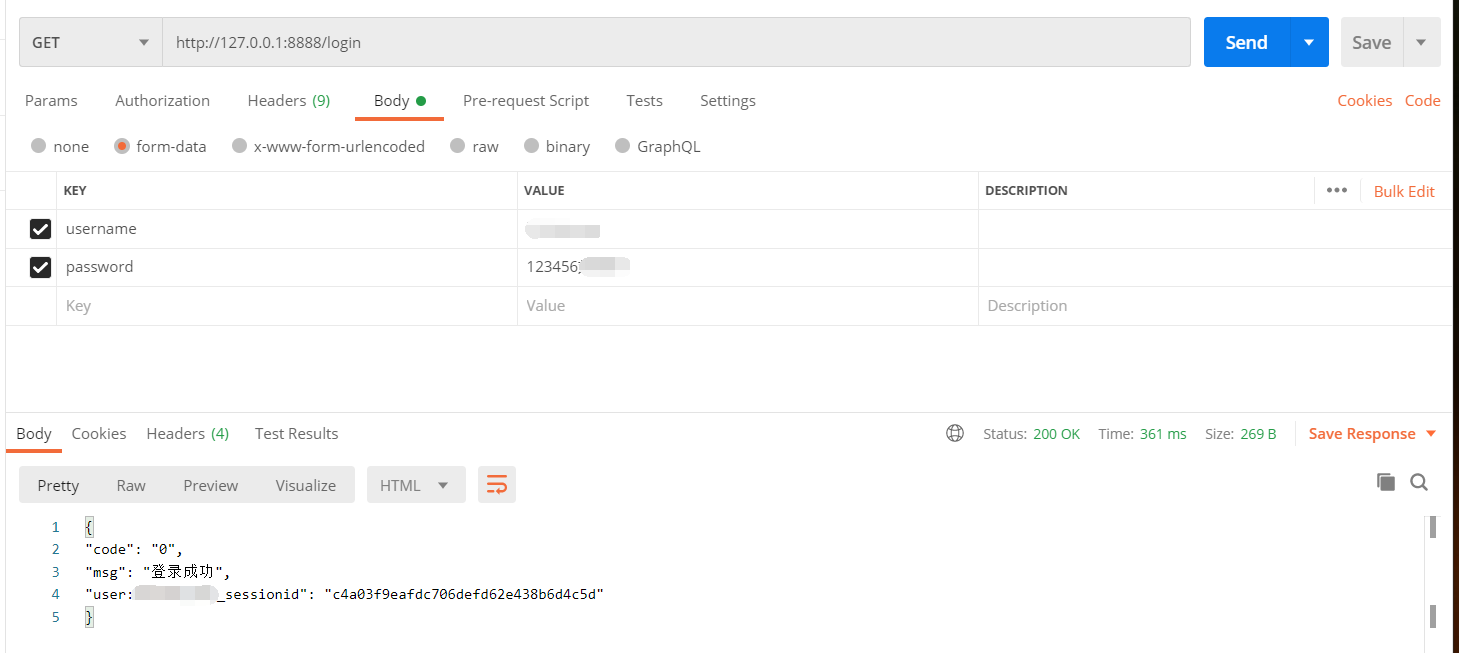一、使用pip install flask按照flask模块。
import flask,json # 轻量级web开发框架 server = flask.Flask(__name__) @server.route('/login', methods=['post', 'get']) # 即支持post,又支持get请求方式 def login(): username = flask.request.values.get('username') password = flask.request.values.get('password') # flask.json.get('xxx') # 如果传参是json,使用此种方式 # flask.request.cookies.get('xxx') # 获取请求中cookie的值,返回的是字符串格式 # flask.request.headers.get('xxx') # 获取请求中header的值,返回的是字符串格式 if username.strip() and password.strip(): p = tools.my_md5(password) query_sql = 'select * from app_myuser where username= "%s" and passwd="%s";' % (username, p) if tools.excute_sql(query_sql): return json.dumps({'code': '0', 'msg': '登录成功'}, ensure_ascii=False) # 需要转为json格式返回 else: return json.dumps({'code': '-1', 'msg': '输入的用户名/密码错误'}, ensure_ascii=False) else: return json.dumps({'code': '-1', 'msg': '不能为空'}, ensure_ascii=False) server.run(host='0.0.0.0', port=8888, debug=True) # 给别人用时,此处写为'0.0.0.0'
二、访问接口
接口挂在server下,启动server后,在浏览器或postman中进行访问接口。
get方式访问地址:http://127.0.0.1:8888/login?username=username&password=password
post方式访问地址:
